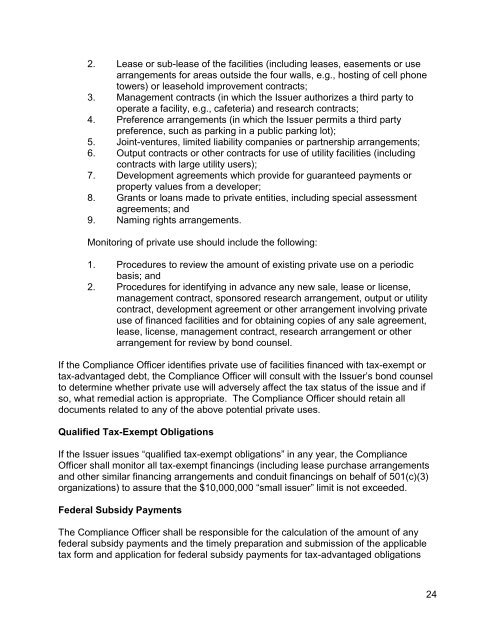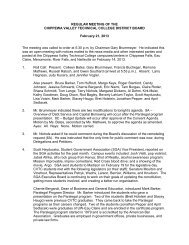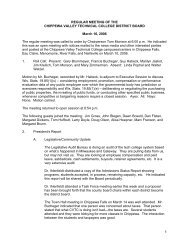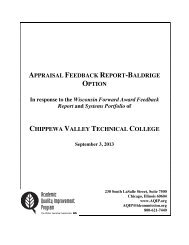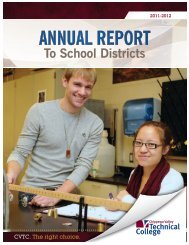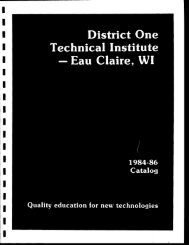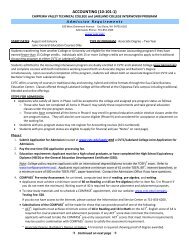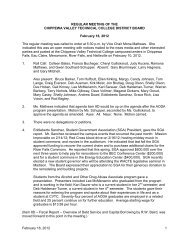Action items are discussed at the Board Committee Meeting (2nd ...
Action items are discussed at the Board Committee Meeting (2nd ...
Action items are discussed at the Board Committee Meeting (2nd ...
Create successful ePaper yourself
Turn your PDF publications into a flip-book with our unique Google optimized e-Paper software.
2. Lease or sub-lease of <strong>the</strong> facilities (including leases, easements or usearrangements for <strong>are</strong>as outside <strong>the</strong> four walls, e.g., hosting of cell phonetowers) or leasehold improvement contracts;3. Management contracts (in which <strong>the</strong> Issuer authorizes a third party tooper<strong>at</strong>e a facility, e.g., cafeteria) and research contracts;4. Preference arrangements (in which <strong>the</strong> Issuer permits a third partypreference, such as parking in a public parking lot);5. Joint-ventures, limited liability companies or partnership arrangements;6. Output contracts or o<strong>the</strong>r contracts for use of utility facilities (includingcontracts with large utility users);7. Development agreements which provide for guaranteed payments orproperty values from a developer;8. Grants or loans made to priv<strong>at</strong>e entities, including special assessmentagreements; and9. Naming rights arrangements.Monitoring of priv<strong>at</strong>e use should include <strong>the</strong> following:1. Procedures to review <strong>the</strong> amount of existing priv<strong>at</strong>e use on a periodicbasis; and2. Procedures for identifying in advance any new sale, lease or license,management contract, sponsored research arrangement, output or utilitycontract, development agreement or o<strong>the</strong>r arrangement involving priv<strong>at</strong>euse of financed facilities and for obtaining copies of any sale agreement,lease, license, management contract, research arrangement or o<strong>the</strong>rarrangement for review by bond counsel.If <strong>the</strong> Compliance Officer identifies priv<strong>at</strong>e use of facilities financed with tax-exempt ortax-advantaged debt, <strong>the</strong> Compliance Officer will consult with <strong>the</strong> Issuer‘s bond counselto determine whe<strong>the</strong>r priv<strong>at</strong>e use will adversely affect <strong>the</strong> tax st<strong>at</strong>us of <strong>the</strong> issue and ifso, wh<strong>at</strong> remedial action is appropri<strong>at</strong>e. The Compliance Officer should retain alldocuments rel<strong>at</strong>ed to any of <strong>the</strong> above potential priv<strong>at</strong>e uses.Qualified Tax-Exempt Oblig<strong>at</strong>ionsIf <strong>the</strong> Issuer issues ―qualified tax-exempt oblig<strong>at</strong>ions‖ in any year, <strong>the</strong> ComplianceOfficer shall monitor all tax-exempt financings (including lease purchase arrangementsand o<strong>the</strong>r similar financing arrangements and conduit financings on behalf of 501(c)(3)organiz<strong>at</strong>ions) to assure th<strong>at</strong> <strong>the</strong> $10,000,000 ―small issuer‖ limit is not exceeded.Federal Subsidy PaymentsThe Compliance Officer shall be responsible for <strong>the</strong> calcul<strong>at</strong>ion of <strong>the</strong> amount of anyfederal subsidy payments and <strong>the</strong> timely prepar<strong>at</strong>ion and submission of <strong>the</strong> applicabletax form and applic<strong>at</strong>ion for federal subsidy payments for tax-advantaged oblig<strong>at</strong>ions24


